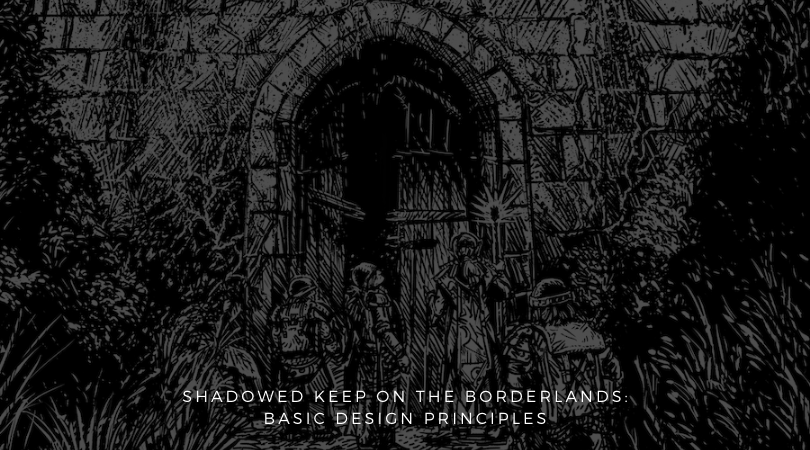The Shadowed Keep on the Borderlands: Basic Design Principles

The Moathouse from T1-4 The Temple of Elemental Evil is one of my all-time favourite modules. I think it’s a great example of genius dungeon design and since I first read it I’ve always wanted to design a similar location.
Back in 2013 Raging Swan Press published Shadowed Keep on the Borderlands for Pathfinder 1st edition. This year, Raging Swan Press released a 5e edition of the adventure and updated the original Pathfinder edition.
I thought I’d resurrect an old series of posts about how I planned and designed Shadowed Keep on the Borderlands. Hopefully, you might find some nuggets of design goodness in my process.
Planning
I’m one of these people who like to plan something before I get started; I find it very hard just to dive in and get cracking (as previous experience has taught me doing that inevitably wastes time and the result is normally inferior).
Once I’d decided to write a homage to the Moathouse, I spent a lot of time thinking about why I love the site and how I could emulate that adventure experience. To me, the Moathouse had several essential elements:
- Verisimilitude: The Moathouse seemed real to me. In the context of the setting and the story the ruins and their denizens made sense. The ruins reeked of a decent amount of realism without sacrificing game play.
- Zoned: To keep things fresh, the Moathouse had different zones: some parts of the upper ruins were inhabited by various monstrous inhabitants while bandits lived in another part. Below ground, the evil cleric Lareth held sway. Different zones required different skill sets and tactics for success. There was something for everyone to do.
- Conflict: There was minor grade conflict between some of the groups in the Moathouse. This could be exploited through clever play.
- Detailed: There were loads of detail in the Moathouse that, if you paid attention, provided clues about its past. In this way players got rewarded for poking about and investigating stuff instead of just blindly whacking everything in their path. Combat is fun—don’t get me wrong—but it is not the be-all and end-all of dungeon exploration.
- Expandable: While the original module didn’t go into great detail, the Moathouse was part of a larger adventure – you could go on from there to explore other locales that led directly from what was discovered therein. Alternatively, you could use the Moathouse as a standalone locale.
Shadowed Keep on the Borderland had to have these elements. Along with Raging Swan’s basic design principles that underpin all our products, I added these additional criteria:
- Detailed: The module locale should be richly detailed so the players can immerse themselves in the ruins.
- Story: There had to be a good story behind the ruins (and the characters should be able to discover that story; the best story in the world is pointless if the players don’t learn it.)
- Generic: The module had to be generic enough that almost any GM could add it to their campaign with minimal effort.
- Rewarding: Players should be rewarded for being clever and paying attention.
- Choice: No railroading; players should have meaningful choices about the order in which they explore the ruin and about how they dealt with those challenges.
- Variety: Provide areas for different classes to shine. So for example, I needed to include undead for clerics to blow up, physical challenges and traps for rogues to disarm and so on.
Once I’d decided this basic groundwork and knew what I wanted to achieve with the module, I was ready to flesh out the basic details of the ruin. More on that next time.


Member discussion